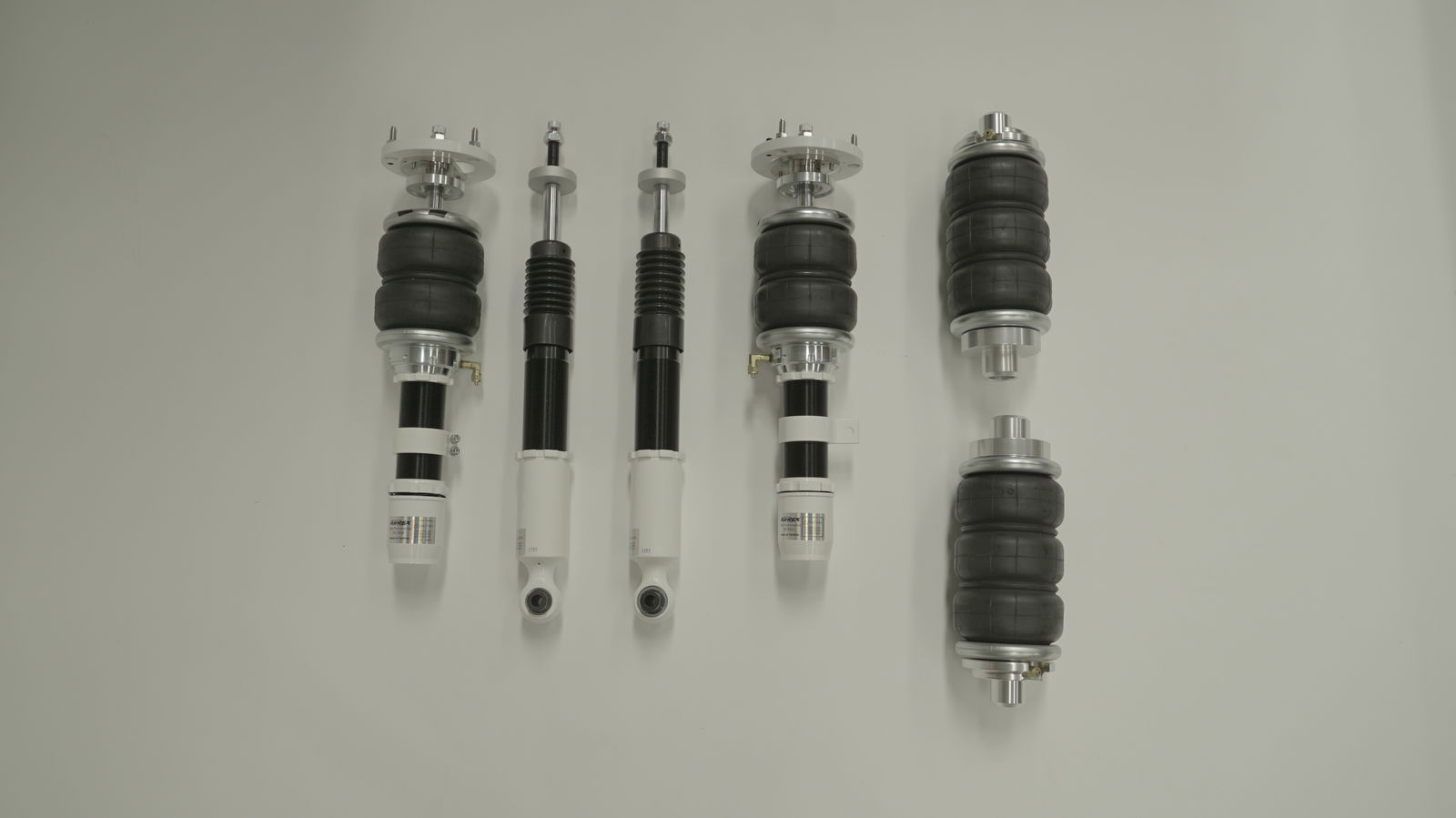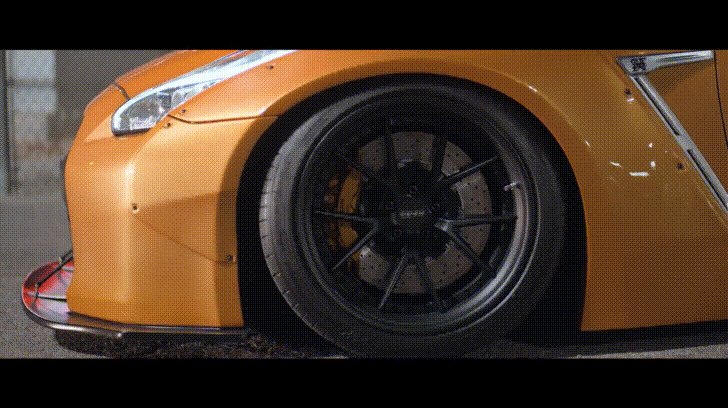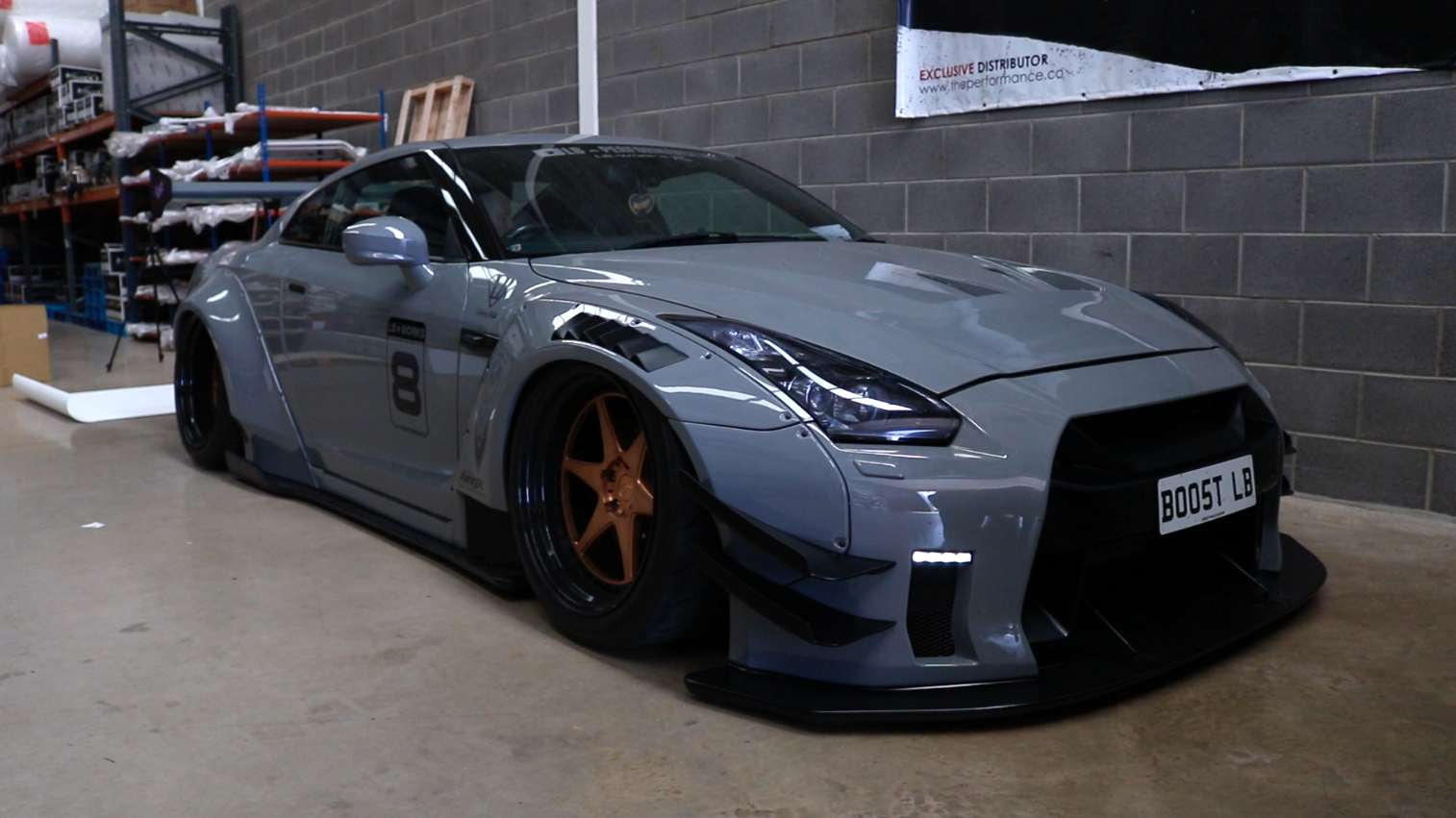The Pros And Cons Of Aftermarket Air Suspension Systems

Few modifications divide the car community like aftermarket air suspension systems. For some, this kind of setup is the best compromise, while others might insist that a car with air ride is ‘ruined’.
But how exactly do these systems work, and what are the benefits and drawbacks?
What goes into an air suspension setup?

Before we go any further, let’s take a look at the components that make up an air suspension system.
An air setup still has struts like any normal car, only here, the springs are replaced with airbags. These are typically made of a rubber and polyurethane composite and are inflated via an air tank and compressor.
A remote control - which can sometimes be replaced with a smartphone app - lets the user select the front and rear ride heights they desire. The more air pumped into the bags, the higher the ride height.

Air lines need to be fed through the car to connect the tank to the bags via an air pressure manifold, and a control module will need to be installed somewhere in the vehicle. Some kits - like those made by Air Lift Performance - feature a manifold and control module combined in one component. AirRex meanwhile manufactures a system that involves packaging most of the components - including the tank - neatly into a single box with a display window. Handily, all of the above can be run off the car’s standard 12-volt power supply.
Pros

Comfort is a big one. There’s a reason main manufacturers are increasingly turning to air suspension (albeit in a slightly different form) - doing away with conventional springs allows for a much smoother ride. After all, you are - quite literally - floating on a cushion of air. Yes, you could lower your car using coilovers, but the result will be a car with a harsher ride than one on air.
Then there’s flexibility to consider. Want to slam your car right to the ground for the next show? That’s fine, simply turn up with a more road-friendly ride height, press a few buttons, and hey presto, you’re there. Hoping to keep it relatively low on the road, but worried about speed bumps and ramps? Again, no hassle - raising the car to avoid horrible crunching sounds rattling through the cabin is fast and easy.
Cons

One of the biggest drawbacks of air ride systems used to be the difficult and invasive installation process, which sometimes involved lots of nasty cutting and drilling. Fortunately, air suspension kits that could almost be considered ‘bolt-on’ are now much more common, with no nasty cutting needed.
You will at least need to drill holes to mount the compressor, manifold and tank, however, and then there’s the problem of all that boot space you’re going to lose for said tank. You’ll be wanting a sizeable one too, if you’re hoping for fast operation that doesn’t require the noisy compressor to be kicking in all the time.
Expense is another big downside - before you’ve even thought about labour costs, you’ll be a few grand down for the kit on its own. Enough to get an extremely nice set of coilovers, in other words, and that’s another point to make - if ultimate performance is what you’re after, airbags are not for you.

Yes, there are some more sport-oriented setups out there that even allow for things like camber adjustments, but despite the gap closing in recent years, coilovers remain the best option if handling is high on your agenda.
The final problem is reliability - airbags can leak, although thankfully, this is very rare on modern, good quality systems.
Where do you stand when it comes to air suspension? Do you have a system on your own car? Comment below with your thoughts.



Comments
“Air ride 3PH “ or at least the 3P ,an air suspension system that will gave you the possibility to adjust both ride height and the pressure in the bags , so basically you can modify both how you want to go low and how firm fhe suspension needs to be in the corners by variating the internal pressure , in fact an STI equipped with an air ride setup , has won a time attack championship in the road homologated category , competing against some really fast coilover equipped track cars . So , the point is that you can theorically have all the advantages if you have a quality setup , without compromises . Oh and you can create some presets saved to run with.For me the only one downside is just the price , but for the sh!tty roads of italy , i’ll surely take an air ride for a sport/luxury car , is the only way for keep the underbelly bumpers ecc ecc unharmed
what a bunch of air-heads
TJ Hunt is triggered
Its heavy. Expensive and it looks stupid.
Air ride is no more comfortable than correctly tuned springs. The reason manufacturers of heavy SUVs or estates is so they can compensate for large payload changes.
Air ride versus the same setup on springs is actually less comfortable, because you have a rising rate spring, you have more inherent internal damping (the air heats up from the compression), and you have more weight.
Ok. First things first - air ride has one fatal flaw: the lower you go, the softer the suspension is. So, if it is your intention to ride low, you must reduce the air pressure in the bags, softening the suspension and increasing travel, which is the opposite of what you want, if you want to avoid smacking the ground. On an air ride system based on threaded body coilovers, you can adjust the height if you have a specific pressure in mind. but not from the cockpit.
Yes, it is possible to go fast and handle well on bags - I have a Cadillac CTS (non-V) that turns 1.01 G on the skidpad. This is supercar-level handling.
The Airlift 3h system automatically achieves the ride height you are looking for, but because of the limitations of air ride, can not achieve low ride and high pressure at the same time. Nothing can. True, the 3h does monitor the pressures across the 2 sides of the same axle, to prevent cross loading the suspension.
Air ride is moderately heavy as a whole system, but there is a gigantic reduction in unsprung weight, since bags are much lighter than steel springs. All the weight in an airride system is in the tank and compressors.
If you are going for a suspension system that will give you the best of everything, your best bet is hydraulics, with air charged accumulators…this the ride height can be adjusted independently of the suspension stiffness…but hydraulics have historically been heavy, sloppy and take a lot of electrical power to run. There are several companies working on a feasible hydropneumatic system. LevelRide is the closest. They are testing their system with very good results as we speak. It is a 12 volt system that works with the car’s factory electrical system.
Pagination